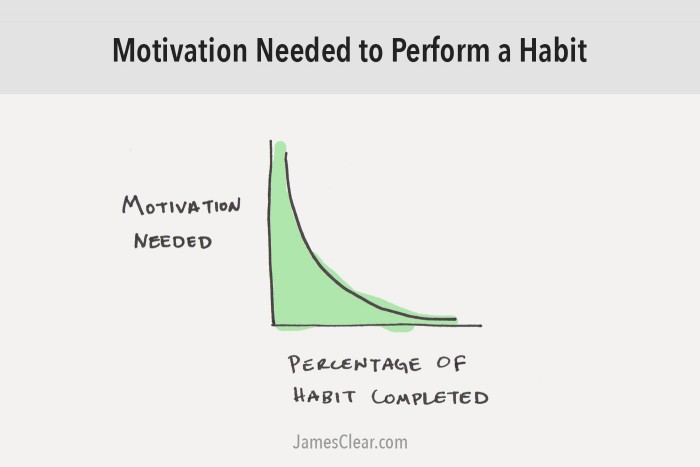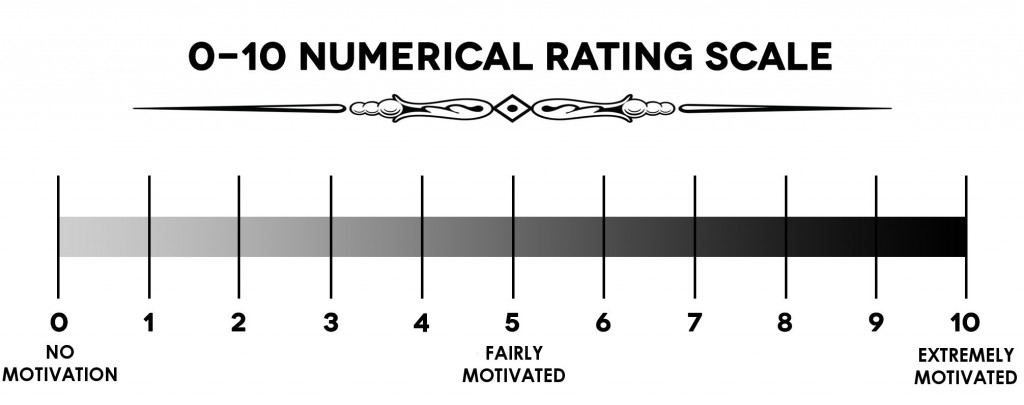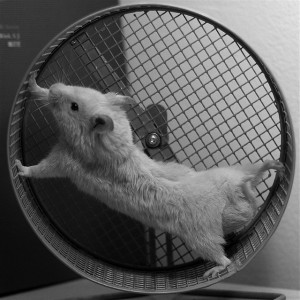Here we are again! The early weeks of the year are a time for high aspirations and lofty plans to reinvent ourselves by way of time in the gym. Everywhere we look we see exciting ads on social media, print media and TV for all sorts of diets and workout plans. These products are pitched with soaring rhetoric delivered by beautiful people to those who likely perceive themselves as being less-than-beautiful—but they have hope! (Or maybe they’re desperate.)
What will all this look like by, say, April? A lot of those ambitious plans will be tossed aside, buried and forgotten. Multitudes will give up entirely and blame themselves. It’ll all start again next year…
The M-word
The title of this post asks a question—and it’s a crucial question!—because your Big Resolution depends on the answer. Do you have an emotional connection to your New Year health & fitness goal? If so, is it positive or negative? Does your goal have meaning to you? How do you feel about your resolution?
The big word here is motivation. There are several types and the one that’s driving a new year’s resolution can make it or break it.
I found an excellent three-part series from Psychology Today called Weight Loss Motivation: Secrets to Staying on Track (Part I, Part II, Part III.) The article does an excellent job of discussing several different flavors of motivation. Two types of motivation will get you where you want to be. The other two… aren’t so helpful.
Identified and intrinsic motivation
Part I of the article describes these two types of motivation as follows:
“Identified motivation is when you have a positive view of losing weight or it is a behavior that you value. Maybe you want to be healthy for a loved one and your future together. For identified motivation there is a strong sense of personal importance and meaningfulness in the task.
Intrinsic motivation is the prototype of self-determination because the behavior is engaged for its own sake, for the simple pleasure and interest in the activity. This motivation involves a focus on the task and produces energizing emotions such as interest, enjoyment, and challenge.”
An example of identified motivation might be a grandparent or parent who recognizes the value of being healthy, strong, and able so he or she can keep up with the kids and grandkids. These people value a high quality of life and they see that a vigorous exercise and healthy eating is the way to get there.
I’ve met a lot of people in the gym like this. Exercise may not be their first love but a positive sense of purpose drives their actions.
I’ll use myself as someone who is intrinsically motivated to exercise and eat right. Essentially I love to pick up heavy things and sweat a lot. I love the process of training for a race or a bike tour. I love being in the gym with the weights. Skiing, cycling, and hiking are pure fun. I do these things for the sake of doing them. They are a reward in themselves.
Both types of motivation involve high degrees of autonomy. An individual motivated in such a way makes a conscious choice to engage in exercise, healthy eating and the like. His or her values and identity align closely with their healthy lifestyle and action. His or her efforts toward fitness occupies a significant and positive place in his or her life. Thus a trip to the gym, a run, a bike ride a swim or a healthy meal is motivated from within.
Part II of the article discusses two studies (here and here) that looked at long-lasting weight-loss management to understand why some people are successful while so many others are not. Regarding the findings the article says:
“These groundbreaking findings have shown that what plays a central role in the maintenance of exercise and physical activity behaviors are:
- Enjoyment
- Perception of competence
- And intrinsic reasons for weight loss”
External and introjected motivation
External and introjected motivation are a stark contrast to identified and intrinsic motivation. The article describes these motivations:
“External motivation works on external demands and operates on the contingency of if/then:
‘If I lose 10 pounds, then I will go to my 15 year high school reunion.’
This motivation is purely external to your interest in losing weight. It is done in order to obtain a reward or avoid a negative consequence.
Introjected motivation is also motivated by external reasons to change. But it differs from external motivation in that it is done for somewhat internal reasons as well.
The problem, however, is that these internal reasons are negatively focused. They come from feelings of guilt or shame.”
It’s clear that these types of motivation involve doing something the individual would rather not do. Negativity is at the core. There’s far less autonomy, less control by the individual in their choice and probably no fun at all. External forces are largely in charge here. We are rarely happy when we perceive that something is forced on us.
If someone is extrinsically motivated he or she isn’t necessarily doomed. The article says:
“In one study conducted in England on 425 government employees, researchers found that extrinsic motives such as appearance and weight management dominated in the early stages while reasons related to intrinsic motivation such as for enjoyment or revitalization were stronger in the maintenance stage.
Studies such as this show that external or introjected motivation can produce results but only in the short term, and as we know, weight-loss is a long term problem.
It’s okay to have extrinsic motivation as long as you are not operating only on extrinsic motivation.”
The F-word and the S-word
I’m not talking about those F- and S-words. I’m talking about feeling and should. In reality we pursue all of our fitness endeavors because we want to feel a certain way. We may want to feel strong, healthy, sexy, or confident. Maybe we feel exhilaration or feel a sense of accomplishment at the achievement of a challenging goal. These are positive fuel sources for our efforts.
On the other hand, we may pursue a fitness goal because we feel we should. We feel we should look better because we feel external pressure from popular images, peers and/or family.
My guess is that what drives these negative shoulds are hopes of alleviating lots of negative feelings. We may not feel loved or worthwhile. Maybe we feel guilt, shame, rejection or intense social pressure to look a certain way. Whether we fully know it or not, we may believe that being thin or muscular will give us a feeling of peace, love and acceptance.
The problem here is we are basing our happiness on how others perceive us. Chances are that if these negative motivations are driving us then even if we become muscular and thin—then all we are is muscular and thin… But we’re still miserable. Who wants that?
Finding positive motivation
There are some strategies that may help. I won’t reprint everything on the subject, but Part III of the article discusses something the writer calls the Foundational Why. This goes to the real reason(s) why you’re working out, dieting, etc.:
“Start by sitting down with paper and pencil and write down why you want to lose weight or get in shape. Write down every reason that you can think of.
After you have gotten all of your thoughts down, go over your responses.
What are the reasons? Do they come from outside yourself or from within? If they come from within, how much are they integrated with your sense of self?
For example, let’s say one of your responses is similar to one of the following:
- Because I should
- Because I am ashamed of my weight
- Because I want to look good for summer
If any of these sounds close to your answers, it means that you are working from extrinsic motivation.”
Following this Foundational Why process, the article discusses the You-at-Your-Best Exercise. It goes like this:
“Think of a time where you felt you were at your personal best. What were you doing? Who were you with?
This event is like a snapshot of you in your finest hour and something that you feel most proud of. It could be a really big action or it could be a small action but it exemplifies you and your character.
Write down this event in detail and then go over it. What does this event say about what you value in life, about what individual strengths you already possess, about what you enjoy doing just for the sake of doing it.
Ask yourself:
- Why did you choose this event?
- Why is it meaningful to you?
- What does it symbolize or represent?
The You at Your Best Exercise will help you connect improving your health to things that you really care about, to things that mean something to you, by showing you what your personal drivers are.
For example, perhaps this exercise reveals that you are someone for whom family is really important. In which case, think of your foundational why in terms of your loved ones or connect them with your health goals. It could be exercising with your partner, or perhaps going on walks with your parents.
It may reveal that you get energy from your sense of ambition. In which case, setting ambitious goals is something that you value and drives you to succeed. Maybe then sign up for an upcoming marathon?
Perhaps it reveals that when you are at your best you are using your humor and sense of play. If so, consider how to tap into that energy when deciding what fitness classes or activities to join. For some people, the addition of wearing silly socks to the gym can change their attitude to working out.
The idea behind this exercise is to understand what naturally interests you in order to draw upon that to create lifestyle changes that you will enjoy.”
It’s sort of in the touchy-feely realm but I like these ideas a lot. If someone has any negative emotions around fitness, exercise and new year’s resolutions then this type of work should be mandatory for achieving those gleaming goals. (Never mind exercise and fitness, understanding our motives is crucial for achievement in any discipline.) Through it we gain valuable awareness of ourselves, what drives us and what’s most important to us. There is simply nothing more important for success.



